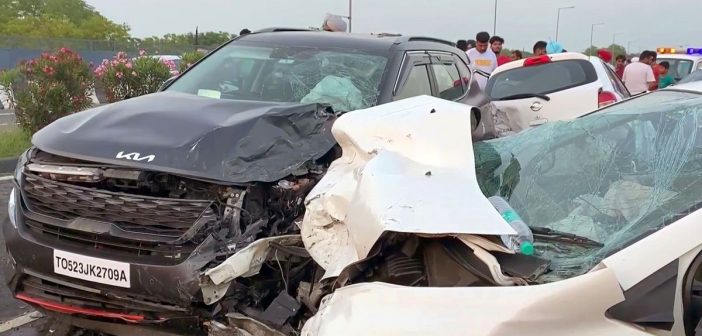Road accidents in India cast a long shadow. Every year, hundreds of thousands are injured and lose their lives on the country’s vast network of roads. While India’s economic boom has seen a surge in vehicle ownership, it’s also brought a perilous rise in road fatalities. This article delves into the causes of this crisis, the human cost, and explores potential solutions.
A Grim Reality
The numbers paint a grim picture. According to the Ministry of Road Transport and Highways’ (MoRTH) latest report (2022), over 461,000 road accidents occurred, claiming a staggering 168,491 lives. This translates to over 450 deaths every single day. The report further highlights an upward trend, with a rise in accidents, fatalities, and injuries compared to the previous year.
Causes of the Carnage
Several factors contribute to India’s high rate of road accidents. Here’s a closer look at some of the key ones:
-
Human Error: Topping the list is human error, encompassing behaviors like speeding, reckless driving, driving under the influence, and fatigue. Disregard for traffic rules and a lack of lane discipline further exacerbate the problem.
-
Poor Road Infrastructure: Many Indian roads are poorly designed, lacking proper signage, dividers, and pedestrian crossings. Potholes, uneven surfaces, and inadequate lighting create additional hazards, especially at night.
-
Vehicle Fitness: A significant number of vehicles on Indian roads are old and poorly maintained, with faulty brakes, steering, and lights, increasing the risk of accidents.
-
Two-Wheeler Dominance: Two-wheelers, like motorcycles and scooters, dominate Indian traffic. While offering affordability, they provide minimal protection in case of a collision.
-
Vulnerable Road Users: Pedestrians, cyclists, and rickshaw pullers are especially vulnerable due to a lack of dedicated lanes and proper footpaths.
The Human Cost
Beyond the statistics, every accident represents a shattered life, a grieving family. The economic impact is significant, with loss of income, productivity, and medical expenses. The psychological trauma on survivors and witnesses can be long-lasting.
The Road to Safer Roads
India has taken steps to address this crisis. The MoRTH has implemented various initiatives, including stricter traffic laws, increased penalties, and awareness campaigns. Investing in improved road infrastructure, promoting better vehicle maintenance, and mandating stricter safety standards for all vehicles are crucial areas for further action.
Technological Solutions
Technology can play a vital role. Smart traffic management systems can improve traffic flow and identify accident-prone areas. In-vehicle technologies like drowsiness detection systems and lane departure warnings can help prevent accidents.
A Collective Effort
Road safety is a shared responsibility. Government agencies, law enforcement, NGOs, and citizens all have a role to play. Promoting responsible driving habits, educating people on traffic rules, and fostering a culture of safety are essential.
Conclusion
India’s road safety crisis demands urgent and collective action. By addressing the root causes, investing in infrastructure and technology, and promoting a safety-first mindset, India can build a future where its roads are no longer a daily battleground. The goal shouldn’t be just reducing accidents, but creating a traffic system where every journey is a safe one.





